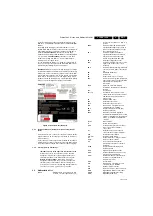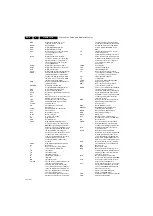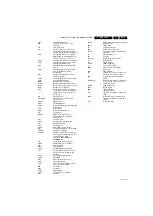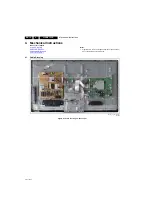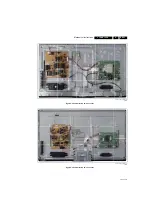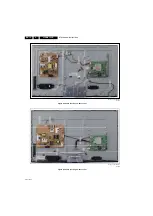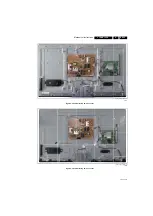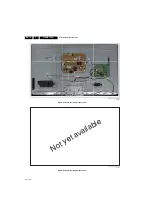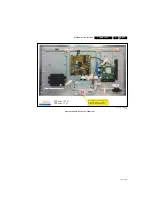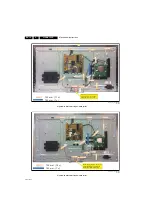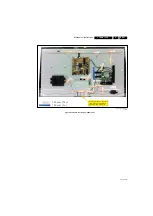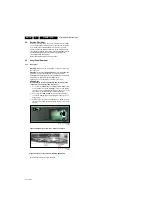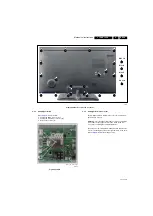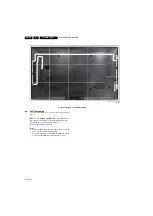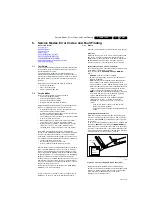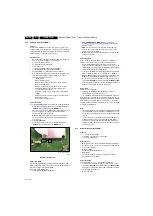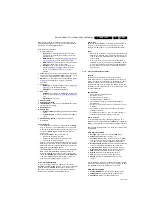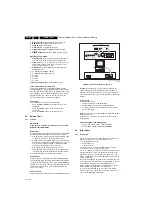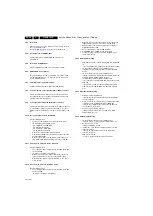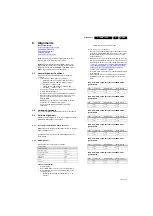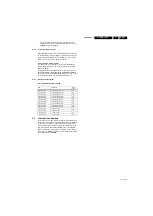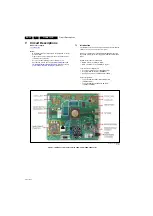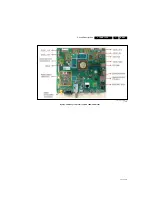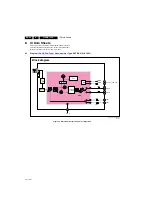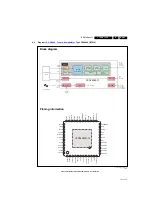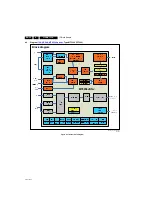
Service Modes, Error Codes, and Fault Finding
5.
5.
Service Modes, Error Codes, and Fault Finding
Index of this chapter:
5.1 Test Points
5.2 Service Modes
5.3 Service Tools
5.4 Error Codes
5.5 The Blinking LED Procedure
5.6 Fault Finding and Repair Tips
5.7 Ambilight Parameters in NVM
5.8 Pairing/Unpairing the Remote Control unit
5.9 Software Upgrading
5.1
Test Points
In the chassis schematics and layout overviews, the test points
are mentioned. In the schematics and layouts, test points are
indicated with “Fxxx” or “Ixxx”.
As most signals are digital, it will be difficult to measure
waveforms with a standard oscilloscope. Several key ICs are
capable of generating test patterns, which can be controlled via
ComPair. In this way it is possible to determine which part is
defective.
Perform measurements under the following conditions:
•
Service Default Mode.
•
Video: Color bar signal.
•
Audio: 3 kHz left, 1 kHz right.
5.2
Service Modes
The Service Mode feature is split into four parts:
•
Service Default Mode (SDM).
•
Service Alignment Mode (SAM).
•
Customer Service Mode (CSM).
•
Computer Aided Repair Mode (ComPair).
SDM and SAM offer features, which can be used by the Service
engineer to repair/align a TV set. Some features are:
•
A pre-defined situation to ensure measurements can be
made under uniform conditions (SDM).
•
Activates the blinking LED procedure for error identification
when no picture is available (SDM).
•
The possibility to overrule software protections when SDM
is entered via the Service pins.
•
Make alignments (e.g. White Tone), (de)select options,
enter options codes, reset the error buffer (SAM).
•
Display information (“SDM” or “SAM” indication in upper
right corner of screen, error buffer, software version,
operating hours, options and option codes, sub menus).
The CSM is a Service Mode that can be enabled by the
consumer. The CSM displays diagnosis information, which the
customer can forward to the dealer or call centre. In CSM
mode, “CSM”, is displayed in the top right corner of the screen.
The information provided in CSM and the purpose of CSM is to:
•
Increase the home repair hit rate.
•
Decrease the number of nuisance calls.
•
Solved customers' problem without home visit.
ComPair Mode is used for communication between a computer
and a TV on I2C /UART level and can be used by a Service
engineer to quickly diagnose the TV set by reading out error
codes, read and write in NVMs, communicate with ICs and the
uP (PWM, registers, etc.), and by making use of a fault finding
database. It will also be possible to up and download the
software of the TV set via I2C with help of ComPair. To do this,
ComPair has to be connected to the TV set via the ComPair
connector, which will be accessible through the rear of the set
(without removing the rear cover).
In this chassis, the set has to be put in Service Mode (SDM,
SDA) before you can use ComPair.
5.2.1
General
Next items are applicable to all Service Modes or are general.
Life Timer
During the life time cycle of the TV set, a timer is kept (called
“Op. Hour”). It counts the normal operation hours (not the
Stand-by hours). The actual value of the timer is displayed in
SDM and SAM in a decimal value. Every two soft-resets
increase the hour by +1. Stand-by hours are not counted.
Software Identification, Version, and Cluster
The software ID, version, and cluster will be shown in the main
menu display of SDM, SAM, and CSM.
The screen will show: “
AAAAAAB-XXX.YYY.MMM.TTT
”,
where:
•
AAAAAA
is the chassis name: L12M31L.
•
B
is the region indication: E= Europe, A= AP/China, U=
NAFTA, L= LATAM.
•
XXX
is the main version number: this is updated with a
major change of specification (incompatible with the
previous software version). Numbering will go from 0 - 255.
YYY
is the sub version number: this is updated with a minor
change of specification (incompatible with the previous
software version). Numbering will go from 0 - 255.
MMM
is the number of the mandatory (upgrade) release in
association with the area of the mandatory (upgrade)
release. Numbering will go from 0 - 255.
TTT bit 7 to 1
is the area of the mandatory (upgrade)
release where 0 - none, 1 - Netflix, rest reserved.
TTT bit 0
: 0 = development release, 1 = production
release.
–
If any version number changes, the new version
number is written in the NVM.
–
If any version number changes, the default settings are
loaded.
Display Option Code Selection
When after an SSB or display exchange, the display option
code is not set properly, it will result in a TV with “no display”.
Therefore,
it is required
to set this display option code after
such a repair.
To do so, press the following key sequence on a standard RC
transmitter: “
062598
” directly followed by
MENU/HOME
and
“
xxx
”, where “xxx” is a 3 digit decimal value of the panel type,
see sticker on the side/bottom of the cabinet. When the value
is accepted and stored in NVM, the set will switch to Stand-by,
to indicate that the process has been completed.
Figure 5-1 Location of Display Option Code sticker
During this algorithm, the NVM-content must be filtered,
because several items in the NVM are TV-related and not SSB-
related (e.g. Model and Prod. S/N). Therefore, “Model” and
“Prod. S/N” data is changed into “See Type Plate”.
In case a call centre or consumer reads “See Type Plate” in
CSM mode, he needs to look to the side/bottom sticker to
identify the set, for further actions.
10000_0
38
_090121.ep
s
090
8
19
PHILIPS
MODEL:
3
2PF996
8
/10
PROD.
S
ERIAL NO:
AG 1A0620 000001
040
3
9mm
27mm
(CTN
S
ticker)
Di
s
pl
a
y Option
Code

